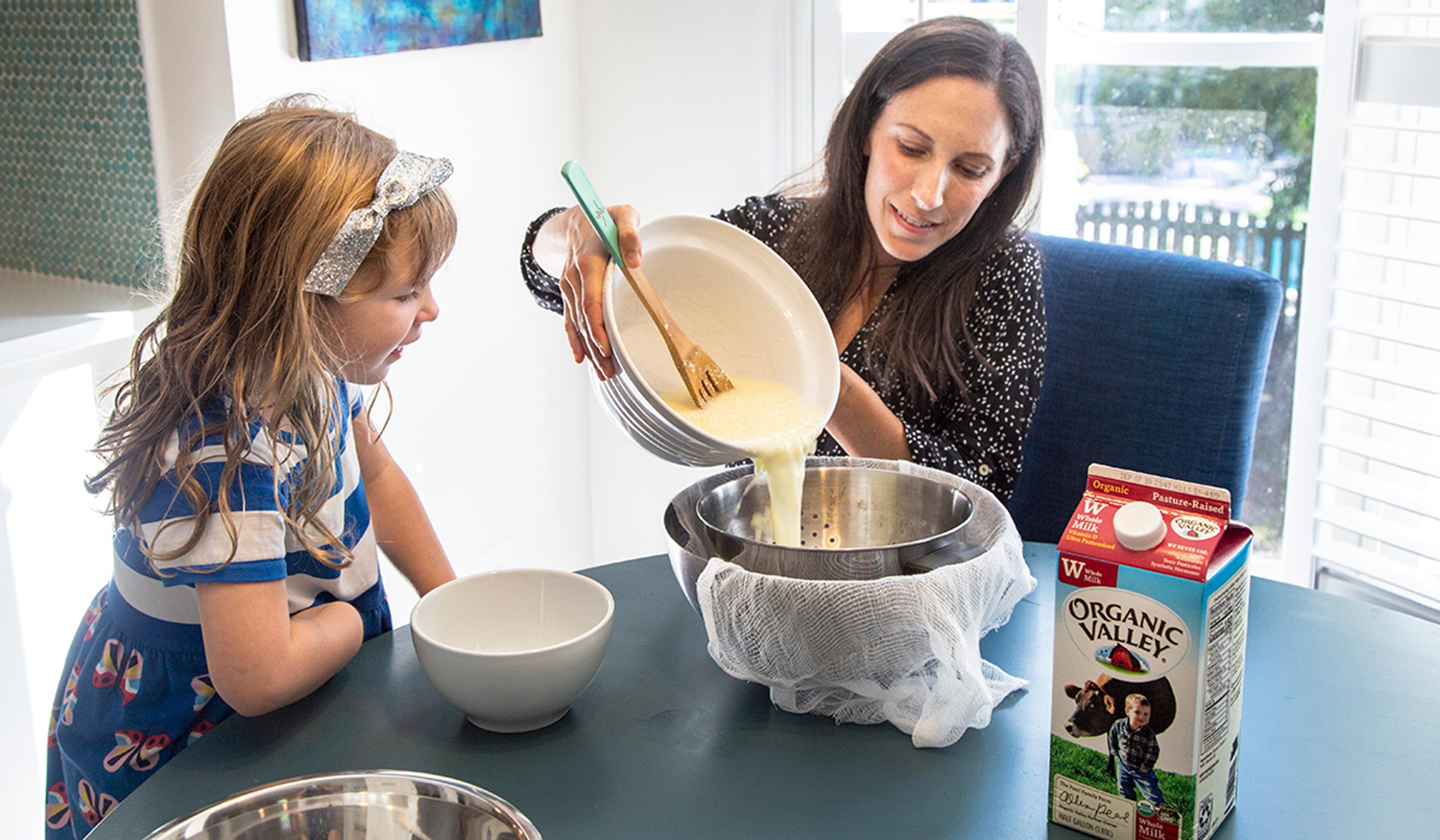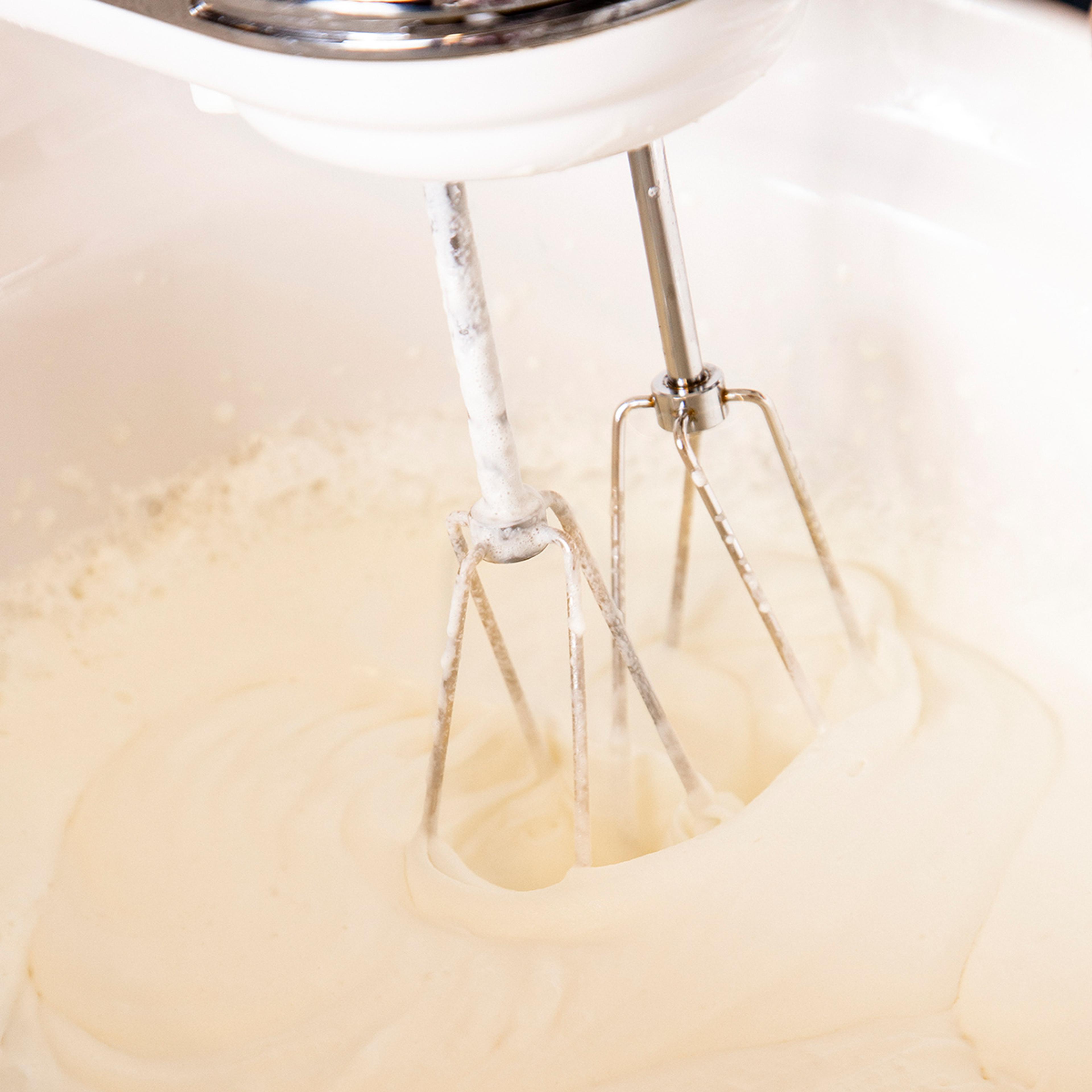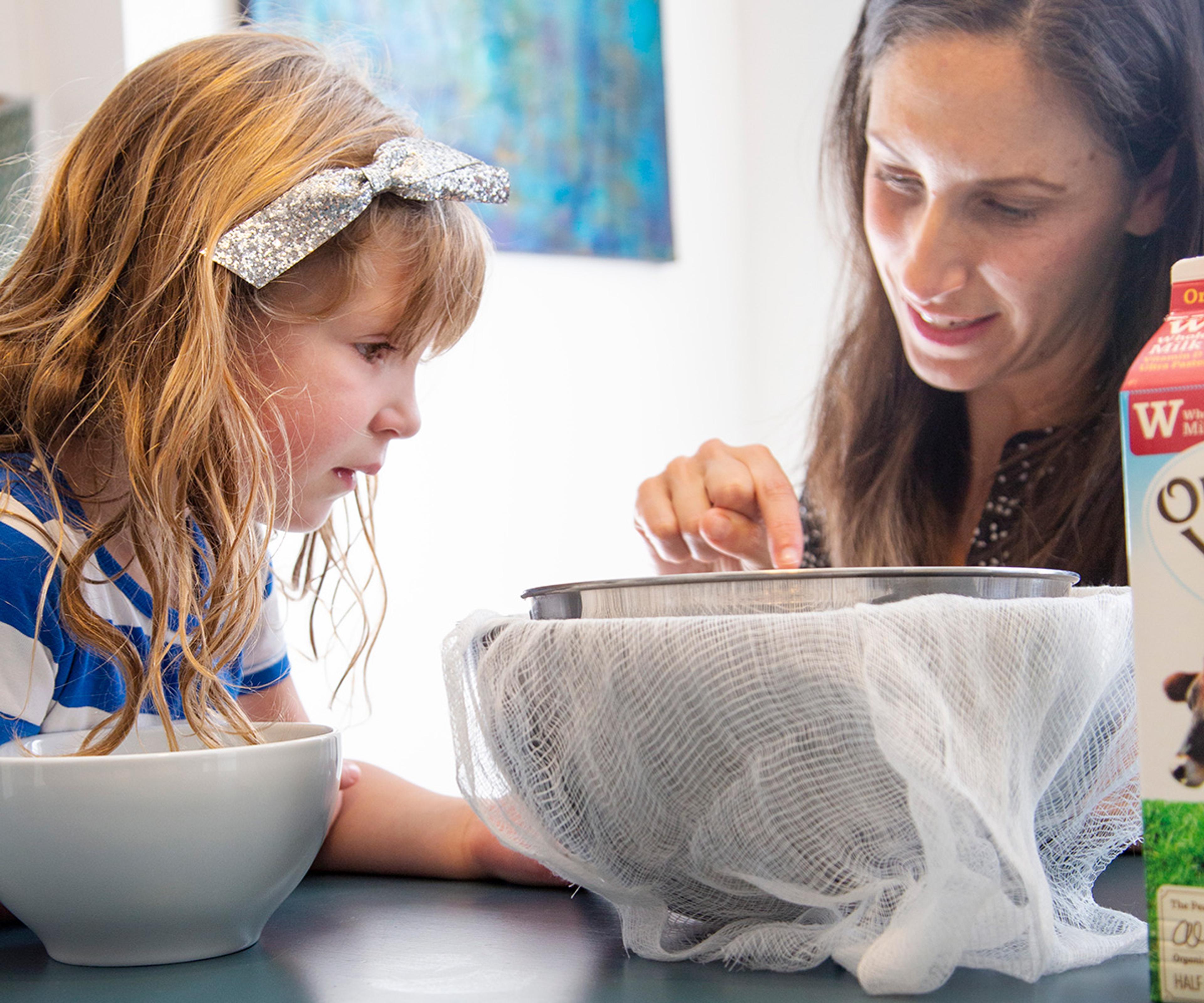
Food
Kid-Friendly Kitchen Experiments that Make Learning Fun
Our new normal has forced many parents to get creative with how we engage our kids. With concerns surrounding COVID-19, typical group activities that are often educational are no longer taking place. Parents are finding ways to keep their kids learning that go beyond boring worksheets and flashcards. Hands-on and fun activities can teach children lessons without them realizing that they are even learning. And let’s be honest, projects like these can make a parent’s day more exciting too.
Finding activities that teach young children subjects like math and science can become a challenge for busy or non-Pinterest-y parents. It should come as a welcomed relief to learn that some amazing activities can be done with minimal supplies and can be performed right in your own kitchen!
Getting kids in the kitchen checks many boxes that we as parents want to accomplish, including:
- Math practice.
- Cooking skills.
- Science experiment exposure.
- Opportunity to try new foods.
- Screen-free quality time.
When kids learn through food, not only do they build confidence by creating their own delicious snacks, but they are presented with opportunities to practice their math and science skills as they double or halve recipes and explore the chemical reactions inherent in baking. Oftentimes parents report that their children are more likely to try a new food if they play a role in making it. If you have a picky eater, it is certainly worth a try.
Dairy foods are a perfect choice for kid-friendly projects in the kitchen. Kids may be used to eating Greek yogurt or butter, but do they know how those foods are made? Clearly, some process has to take place before these items are perfectly packaged and sold in our grocery stores.
You can tell your kids how these foods are made, or you can show them by having them create some dairy favorites with their own two hands. From ricotta to whipped cream, making these favorites is simple, educational and delicious. Read on for step-by-step instructions along with the educational pointers to share with your kids. Sounds like a kitchen win!

Lauren Manaker and her daughter in the kitchen. Photo by Jackie Stofsick.
Greek-style Yogurt
Making homemade Greek yogurt is an easy and rewarding project that children as young as 3 can do (with the help of an adult). Rather than making yogurt from scratch, you can save yourself some steps by using store-bought traditional yogurt and explain the process of converting it to a Greek version.
This simple DIY experiment requires the child to strain traditional yogurt. When your child sees the whey separate with her own two eyes, you can explain how milk consists of two proteins: casein and whey. Whey is clear and liquid, and casein is often more solid. Your child will see both proteins separated at the end of the experiment (and then the best part is eating it together!).
How to Make Homemade Greek Yogurt
- Place a medium colander over a medium mixing bowl and make sure there is room for the liquid to drain into the bowl.
- Place two coffee filters inside the colander.
- Place 2 cups of plain, traditional yogurt into the coffee filters.
- Cover the colander/bowl with plastic wrap and refrigerate overnight, for at least nine hours.
- The next day, there will be a clear liquid at the bottom of the bowl and thick, strained yogurt in the coffee filter. The liquid is whey, and the thick, remaining yogurt is Greek-style yogurt, which is made of the casein protein.
Tips for Use
The creativity doesn’t have to stop after the Greek yogurt is ready. Make it into a food-art project by having your kids create a parfait with some fruit, granola, and honey. Encourage them to layer each ingredient and customize to their liking.
You can also use Greek-style yogurt in baked goods in place of sour cream. Try it in banana bread or these Peach Upside-down Cakes with Cinnamon Whipped Cream.
Don’t toss the whey! The whey can be used in smoothies, baked goods or other recipes. It is a source of high-quality protein and can be used as a nutrition booster in many recipes.

Photo by Jackie Stofsick.
Whipped Cream
Commercial whipped toppings can be made with ingredients that many parents don’t want on their child’s plate. Homemade whipped cream is made with just two ingredients: heavy cream and sugar. One benefit of making your own whipped cream is that you can control how much sugar is added.
For a brief food science lesson, explain to your child that as a result of the whipping action, millions of tiny air bubbles interact with fat particles (known as globules, a word that will make any child giggle) naturally found in the milk, and the air partially breaks down the fat. Eventually, the fat rejoins other small fat particles, creating a stable foam. This stable foam is your whipped cream!
How to Make Homemade Whipped Cream
- Chill a medium-sized metal bowl in the refrigerator for 15 minutes.
- In the chilled bowl, combine ½ cup Organic Valley whipping cream and 2 tablespoons granulated sugar.
- Using a whisk or electric beater, whip for a few minutes or until soft peaks form. (Don’t over-whisk or you will end up with sweet butter!)
- Explain the scientific reaction occurring while you are whipping the cream. Allow your child to witness the effect and understand the process.
Tips for Use
Use your freshly whipped cream to add some excitement to otherwise ho-hum fruit. You could keep it simple and dip fresh fruits into the cream, or get creative and make fancy layered mini trifles or parfaits for each member of the family using clear wine glasses. (Try this Raspberry Lemon Parfait recipe!)
Or go for the classic ice cream sundae topped with a dollop of your whipped cream and, of course, a cherry on top.
Bonus!
Omit the sugar and whip your whipped cream longer to make your own butter in 20 minutes!

Photo by Jackie Stofsick.
Ricotta Cheese
Ricotta is a fresh cheese that can be made by simply curdling the casein protein naturally found in milk, which makes this DIY project a perfect science experiment.
Milk proteins consist of casein and whey. If an acid (like lemon juice or vinegar) is added to milk, the pH decreases. This reduced pH creates a chemical reaction that causes the casein to curdle.
Food historians believe ricotta cheese is an ancient food that originated in the Italian island province of Sicily. If you want to sneak in a brief geography lesson, share that little ricotta trivia and ask your children to find Sicily on a map.
Note before beginning: Do not use ultra-filtered milk for this project. Regular whole milk will create the best curds for your DIY ricotta.
How to Make Homemade Ricotta
- Place a colander (a chilled metal one, if you have it, but plastic will work fine) over a mixing bowl and make sure there is room for liquid to drain into the bowl. Layer cheesecloth or coffee filters inside colander and set aside.
- In a 1-quart or larger microwave-safe bowl, combine 2 cups Organic Valley whole milk, ¼ teaspoon salt, and 2 tablespoons distilled white vinegar or lemon juice.
- Microwave on high power for 3 minutes, until milk is lightly bubbling. Share with your child that combining milk with the acid and heating the mixture will create a chemical reaction that will cause curdling to occur.
- Carefully remove bowl from the microwave and stir. Milk should quickly separate into solid white curds and transparent liquid whey.
- Pour the heated milk mixture into the prepared colander to drain (it should drain relatively quickly).
- The curd left in the cheesecloth is your ricotta cheese. Save the clear whey protein to add to smoothies, mashed potatoes, and other recipes for a protein boost.
Tip for Use
Use your homemade ricotta in lasagna, or simply top whole-grain crackers with some creamy ricotta for a nourishing mid-day snack.
Key Takeaway
Kitchen experiments can be a fun way to help kids learn about science, cooking and even geography in an unexpected way. Using high-quality ingredients from Organic Valley to conduct these educational dairy investigations will ensure that these projects will not only result in some new knowledge, but also result in some delicious and nutritious food to enjoy.
If your kids enjoy these three experiments, the fun doesn’t have to stop here. From making DIY butter to creating homemade frozen yogurt pops, getting creative in the kitchen can be an endless and rewarding endeavor.
We want to see your creations!
Show us your kitchen experiments (and the fun - or mess!) by tagging @OrganicValley on Facebook or Instagram!
Lauren Manaker is an award-winning registered dietitian and book author. After spending over 15 years working in health care and industry, she started a consulting business focusing on reproductive, pediatric and women’s health. Lauren resides in Charleston, South Carolina, with her husband and young daughter. In her spare time, she can be found enjoying an outdoor oyster roast in the cooler months, doing anything on the water in the warmer months, and practicing yoga year-round.
Related Articles
- Tags:
- cooking & entertaining,
- family & kids
















